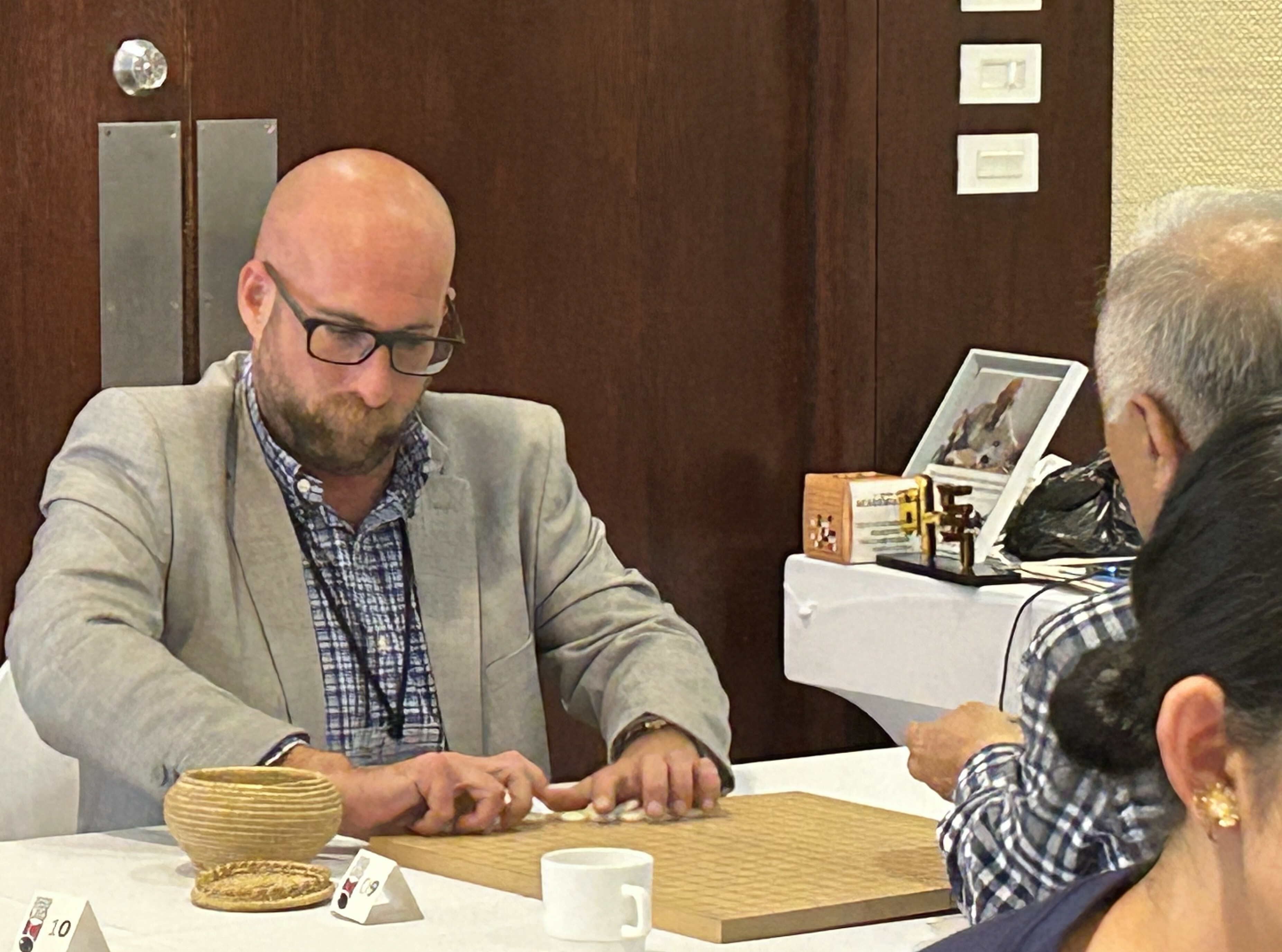By Chris Garlock, American Go E-Journal (Quito, Ecuador)
On the final day of the 2025 Latin American Go Congress, amid the buzz of closing rounds and goodbyes, I caught up with Michael Kaiser, a 45-year-old data engineer from Stuart, Florida — one of just two U.S. players in attendance.
Kaiser discovered Go in 2018 and quickly fell in love with both the game and its global community. “I love Go and I love to travel,” he said. “This is my second Latin American Go Congress — I went last year in Guatemala City — and it’s a great way to do both. Plus, it helps me practice my Spanish.”
Go, Culture, and Community
Between rounds, Kaiser explored Quito’s cultural treasures — “the National Museum and the Botanical Gardens are must-sees,” he said — and took in some of the city’s nightlife. But what stood out most were the players. “The people here are incredibly welcoming,” he emphasized. “Even if you don’t speak Spanish, don’t be intimidated. Everyone’s kind and ready to help with translations or anything you need.”
Comparing Scenes
Having played in both U.S. and European tournaments, Kaiser sees Latin America’s Go scene as both unique and competitive. “About half the players here are dan level, which isn’t the case in most U.S. tournaments,” he noted. “The overall concentration of strong players is higher.” He added that while rank calibrations vary by country — “Colombia’s players are said to be especially strong” — the level of play is impressive across the board.
The Spirit of Go
A former chess competitor, Kaiser said Go offers something different. “When you meet another Go player, there’s an instant connection,” he reflected. “Stronger players take time to review your games, and there’s a real sense of community. I’ve played in Japan, Europe, and now Latin America — no matter where you go, you walk into a Go club and you’re immediately accepted. It’s something special.”
As the Congress wound down, Kaiser smiled when asked for his favorite thing about Go. “It’s the people,” he said simply. “Go brings people together — across languages, borders, and backgrounds. That’s why I keep coming back.”